Why Visit Ilha da Culatra?
The Ilha da Culatra makes an ideal escape for those who want to escape the hustle and bustle of city life. The island is contained within the Ria Formosa national park, which ensures development is limited. This way it retains a laid-back air. And with its large expanses of sand, it’s easy to find your own private spot away from the crowds, even on a busy summer’s day.
Where Is Ilha da Culatra
Ilha da Culatra (Culatra Island) is located off the coast of the Algarve in Portugal.
Along the eastern end of the Algarve, between Faro and Tavira, stretch many miles of barrier islands. Made entirely out of sand, their shape is constantly changing at the whim of the sea and its currents. The power of these currents is visible in the narrow gaps between each island that link the sea and the sheltered lagoons behind. Each turn of the tide forces many millions of litres of water through these openings.
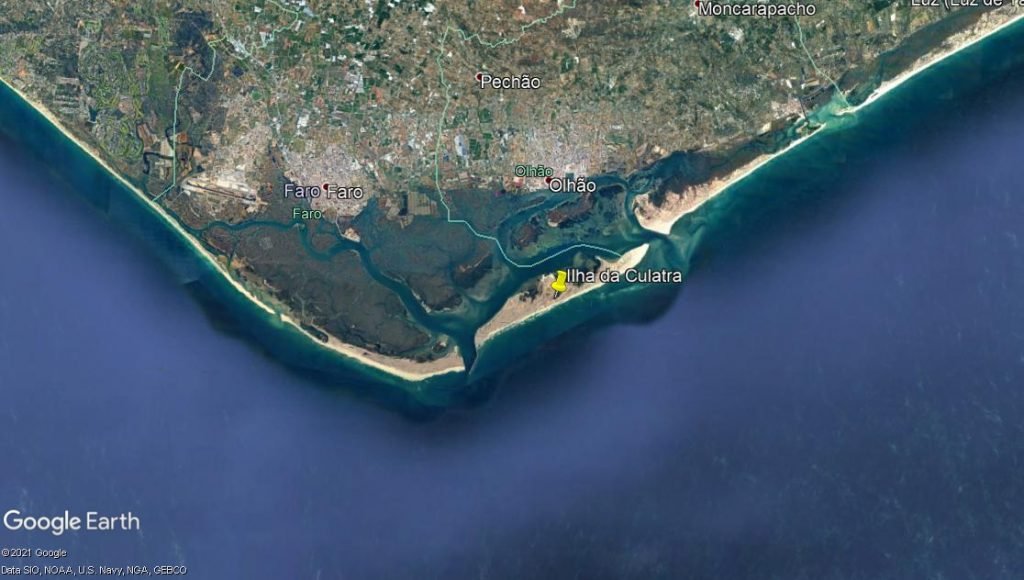
How to Get to Ilha da Culatra
The only way to get to the island is by sea. For those lucky enough to have their own boat, there are several anchorages that provide good holding. The main one is located off of the village of Culatra itself. To read more about the island from a sailor’s perspective, read about our experiences here.
For everyone else, the cheapest and easiest method of getting there is by ferry. Summertime departures go from both Faro and Olhão however during the low seasons, the ferries only run from Olhão. A one-way ticket in 2020 cost €1.85 to/from Olhão and €2.50 from Faro.
Timetables change regularly and it’s best to check for the latest one at the booking offices near each ferry dock. Tickets are also bought here, prior to travel. Make sure you check the timetables correctly, as missing the last one back to the mainland can prove costly.
Private water taxis provide an alternative method of travelling back and forth between the mainland and the island. This can be a more flexible option, as the taxis will take you to wherever you choose. However, the cost is significantly more than the ferry, coming in at around €25-30 each way.
The final option for visiting is to take an organised tour. These depart from both Faro and Olhão and provide the opportunity to explore the waterways and visit some of the other islands. An advantage of these kinds of tours is that you might also get to see dolphins. In 2021, orcas were spotted off of the entrance.

How to Get Around
There are no roads or cars on Culatra, so you’ll be using your legs to get you around. The only traffic you’re likely to see are tractors and three-wheeled vehicles. The tractors are one of my favourite aspects of the island and are used to transport goods around the island. Most of them are old and allow you a glimpse back to life when life on the island primarily revolved around fishing.
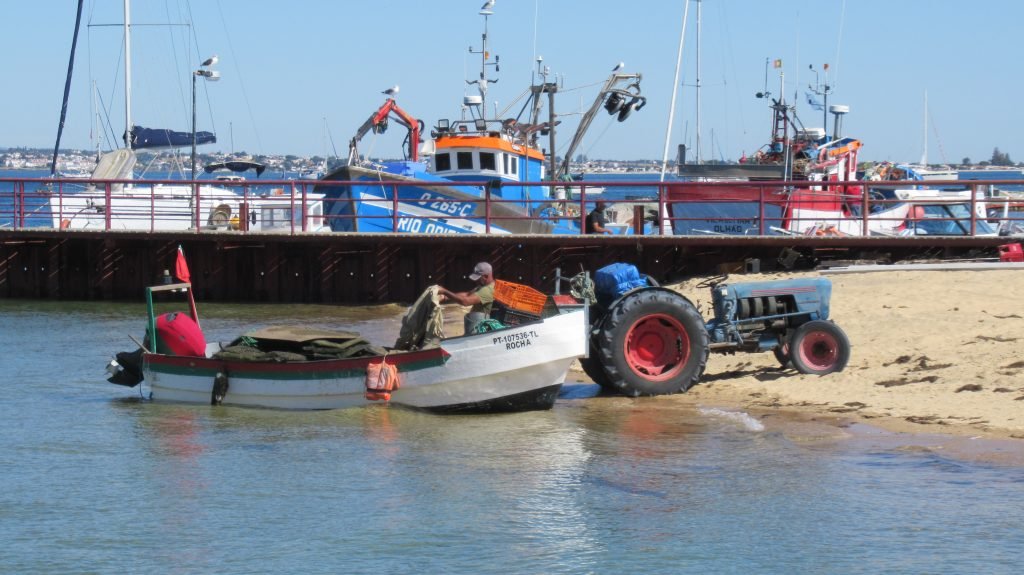
What to do on Ilha da Culatra
For an island made out of sand, there is a lot to do, particularly for nature and beach lovers. I would even describe it as a paradise!
Stroll Around the Village of Culatra
The ferry to Culatra will drop you off on a dock with a long walkway joining it to the land. At the head of the dock, take a few minutes to browse the information boards near the church that give you an insight into the history of the village.
Next, take a wander around the maze of paths that run between the rows of white-painted, single-story fisherman’s huts. Despite the unfavourable soil, residents have eked out pretty gardens, many decorated with objects from the sea.
Facing the inner lagoon is the island’s small harbour and next to it are rows of pointy roofed fisherman’s huts.
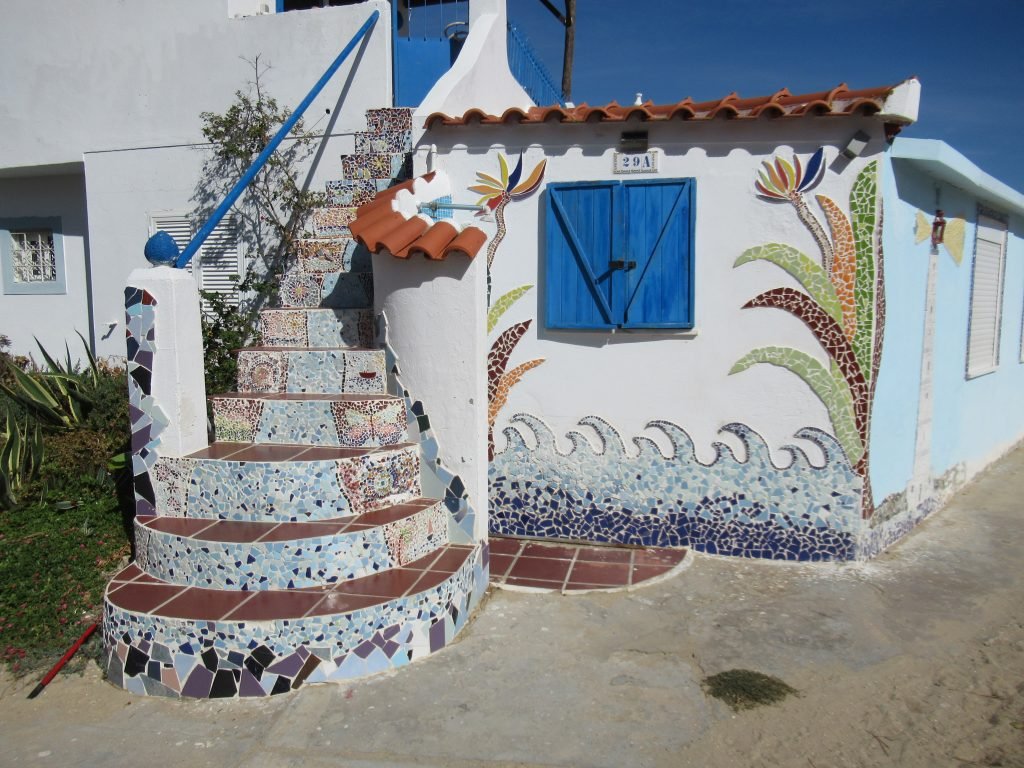
Relax on the Beach
The Praia de Culatra is a 6.5km long swatch of soft, golden sand, facing onto the Atlantic Ocean. Access to the beach from the village is along a 1km wooden boardwalk. At the end of the boardwalk, you’ll find toilet facilities and on the beach itself, a cafe. This area is also where you’ll find sunbeds and umbrellas for hire. However, with your own equipment, a short walk in either direction will lead you to your own private spot.
The beach is wheelchair accessible with ramps at each end of the boardwalk and a short section running along the beach.

Take a Walk
For those who are a little more active, there are plenty of walks to satisfy you. A popular one is to take the wooden boardwalk out to the beach. The walkway crosses tidal flats, as the tide comes in you can watch it filling the rivulets below you. At low water there is an expanse of sand with clusters of plants eking out a living.
Once at the beach, for a longer walk, turn west towards the tall lighthouse of Farol. Farol is the second village on the island, another place of low housing crisscrossed with walkways. From the seafront here you can view the maelstrom of swirling waters at the entrance to the inner lagoons.
You’ll probably find things are a little busier down this end of the island as the beach is easier to access. Lifeguards also operate during the summer period and there are facilities including cafes and restaurants as well as parasols and sunbeds for hire.
For those who like to make their own routes, a stroll through the dunes following the tractor tracks can take you to places that will make you feel like you’re the only people on the island. Maybe you’ll end up at the smaller village of Hangeres and the ruins of a formal naval outpost.
If taking a walk, be aware that there is no shelter on the island. Take plenty of water and take precautions to protect yourself from the sun’s hot rays.
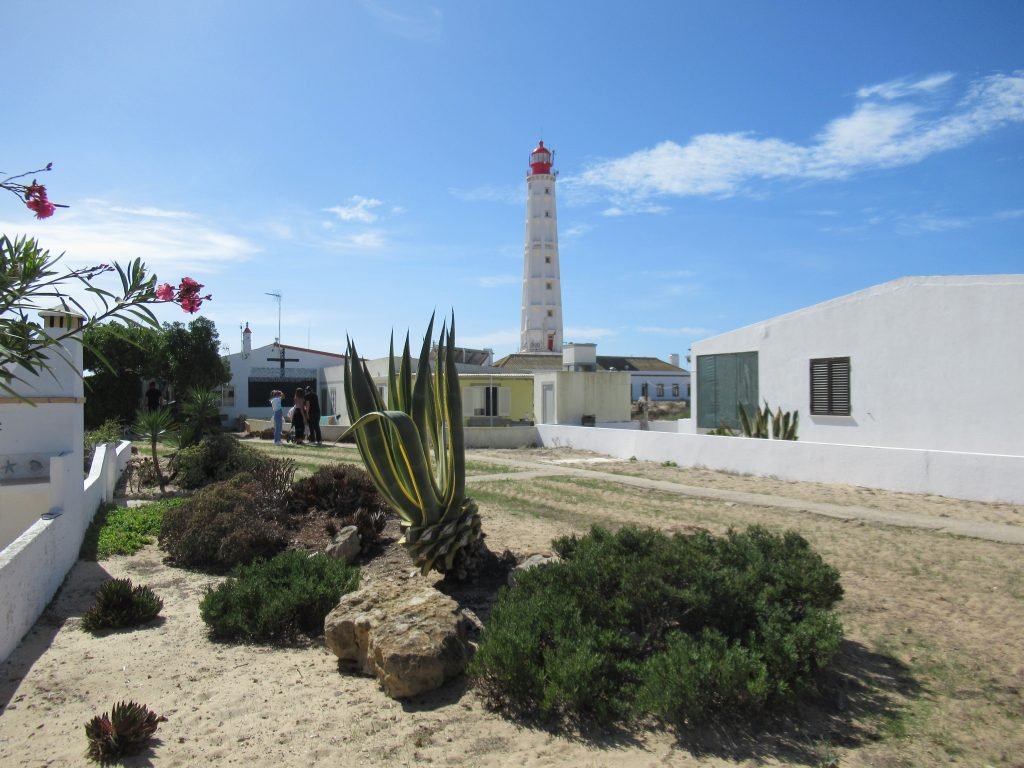


Escape into Nature
Despite the lack of soil, hardy plants have taken root across large parts of the island. A variety of nature can be spotted amongst the different environs of beach, dunes, and marshes. It’s an ever-changing landscape depending on the sea’s mood.
During springtime, flowers carpet the island in a riot of colour.
As well as humans, birds make the most of the abundant food, particularly the comical-looking, long-legged storks that wade and peck in the shallows. On the open side of the island, sandpipers dash amongst the surf.

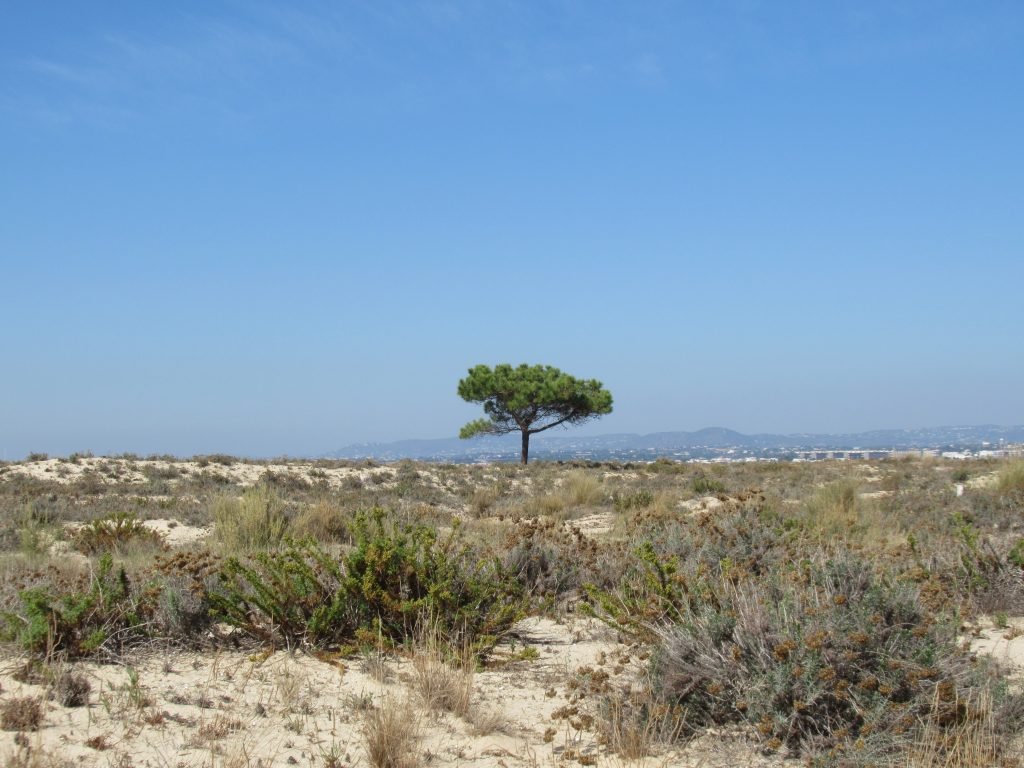
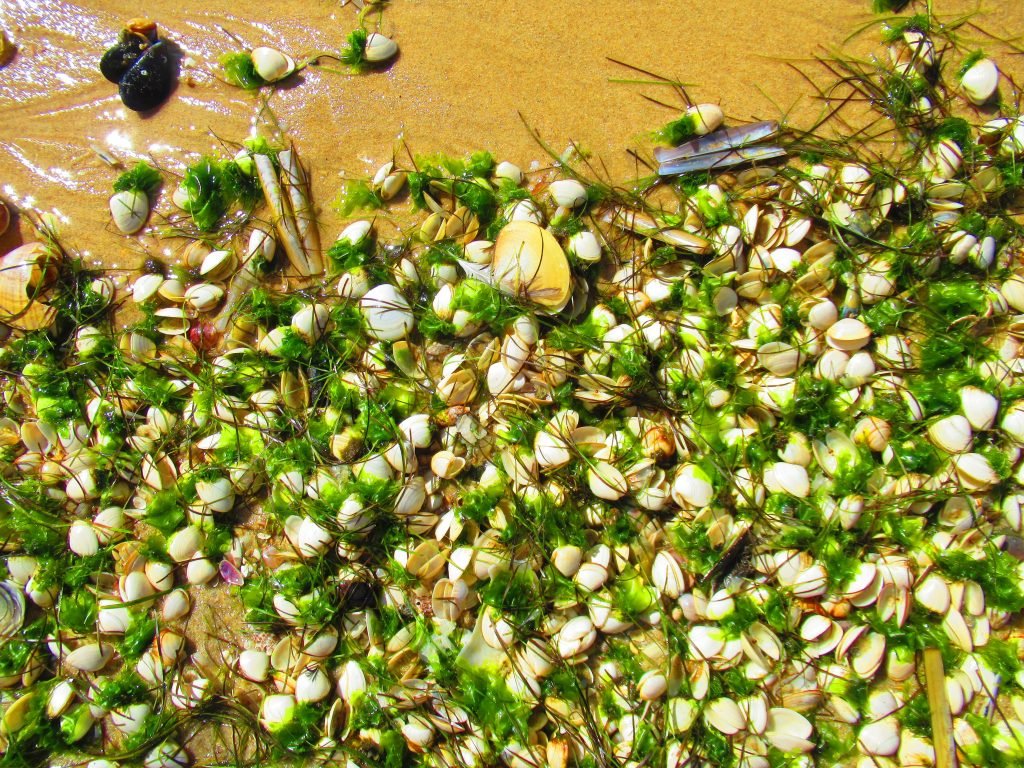
Watch the Fishermen at Work
Although the island may no longer have as large a fishing fleet as it did in the past, fishing is still a major part of life here. The small harbour at Culatra is busy with fishing boats, both small and large. There is also a shellfish industry. At low tide, scores of people dig in the exposed sand as they carry out the backbreaking task of collecting clams. Further out, the falling tide exposes oyster cages.
If you stand a while on the walkway overlooking the harbour, you’ll maybe catch a glimpse of the day’s catch being unloaded or see oysters being processed.
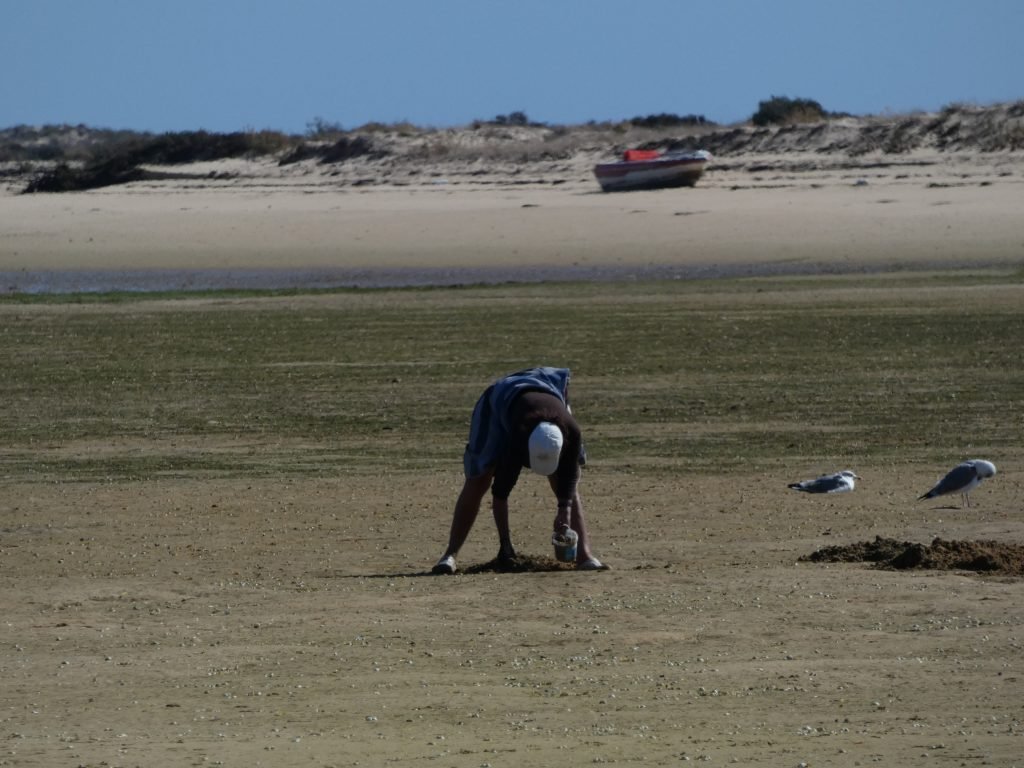
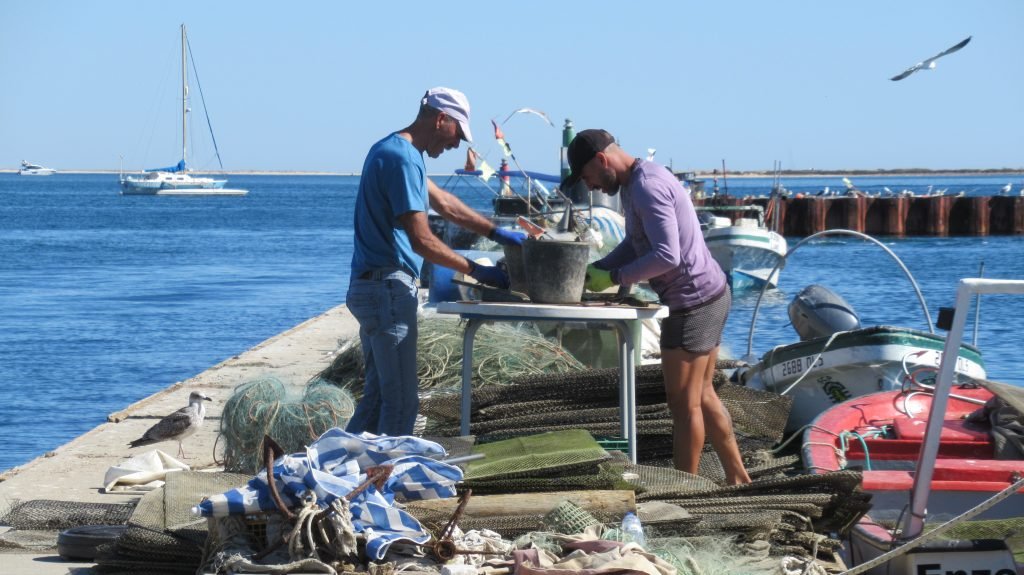
Watch the World Go By
In both Culatra and Farol villages you’ll find a number of cafes and restaurants where you can sit back, enjoy a drink and a snack and watch the world go by.
For a more substantial meal, what better place to eat some seafood than where you can see where it came from. For a traditional Portuguese dish, try a seafood cataplana whose ingredients will have been caught right off the island’s shores.
Gaze at a Beautiful Sunset
With the wide-open skies and low landscape, the sunsets here can be stunning. If ferry timetables allow, it’s worth catching a later one to enjoy a spectacular show from nature.
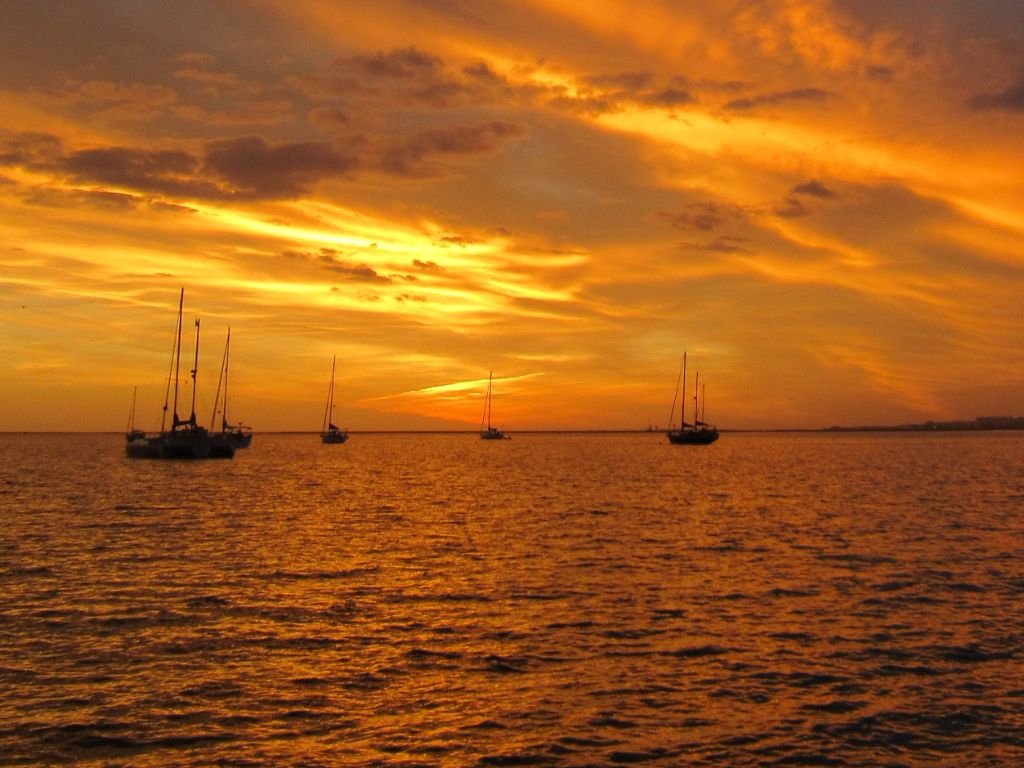
Go For a Swim
The section of the beach located closest to the boardwalk and at Farol have lifeguard patrols during the day in summer. Make sure you heed the safety notices as on a stormy day, the waves that pile onto the beach can be fierce and very dangerous.
On a gentle day, the waves lap gently on the shore, and when it’s hot, the sparkling sea can look enticing to go in for a swim. The crystal clear waters may even allow you to see a shoal of fish darting around your feet. However, don’t expect a bath-like water temperature! During summertime, the Atlantic generally reaches a temperature of 20 degrees centigrade.
For a warmer experience, take a dip on the north shore of the island, in the inside lagoons. Here the shallower water is heated up by the sun during the day.
Where To Stay
Accommodation on the island is very limited. An easier option is to stay on the mainland and take a day trip.
The Algarve Tourist Board can provide advise and information on where to stay.
The Social Media Bit: Want to Follow Us?
If you’d like to follow us on other social media platforms (Facebook, Instagram and YouTube), you can do so by using these links:
Or use the link below to track our voyage on NoForeignLand.com.
And finally, you can sign up to receive email notifications of new blogs using the subscribe box at the bottom of this page.
Thank you from Nichola & Colin


